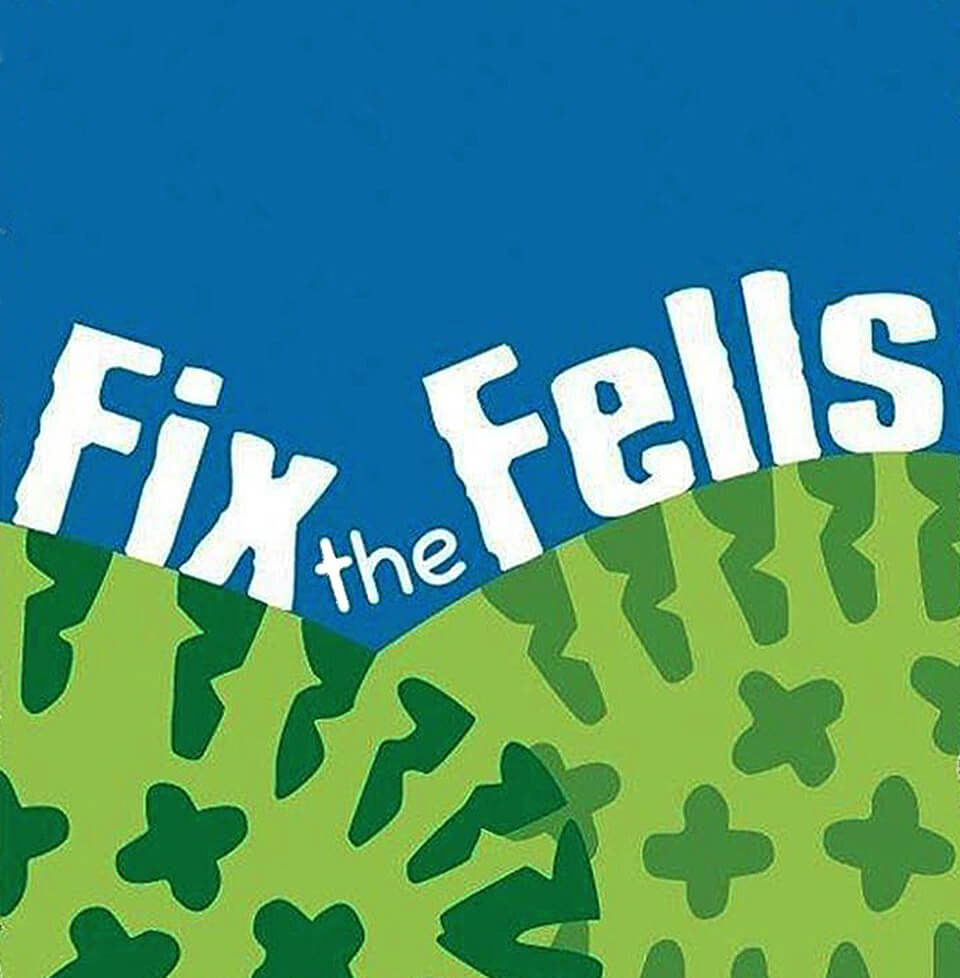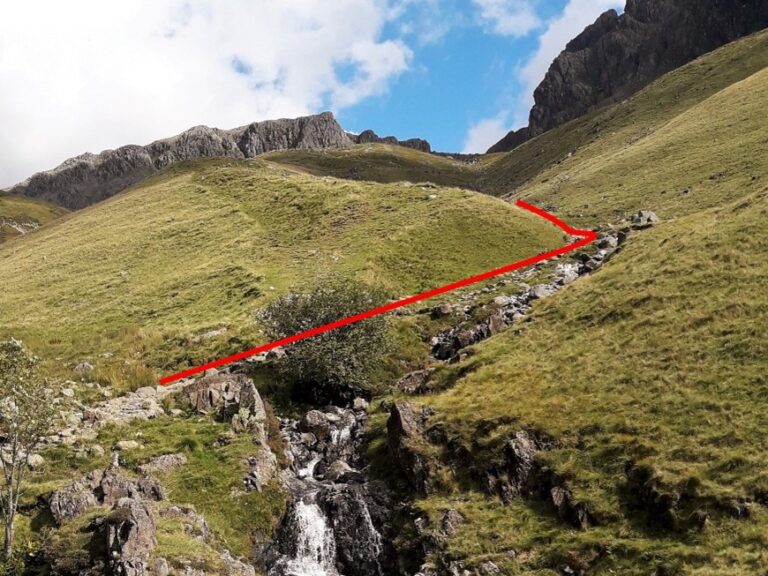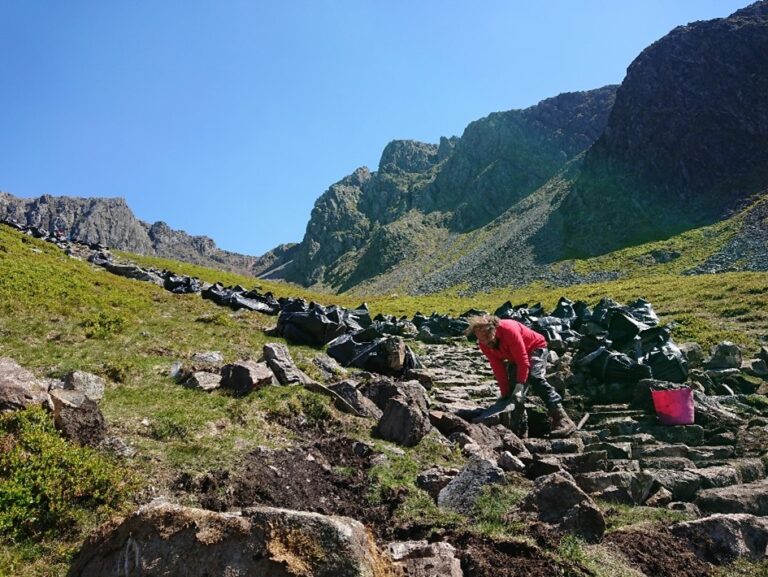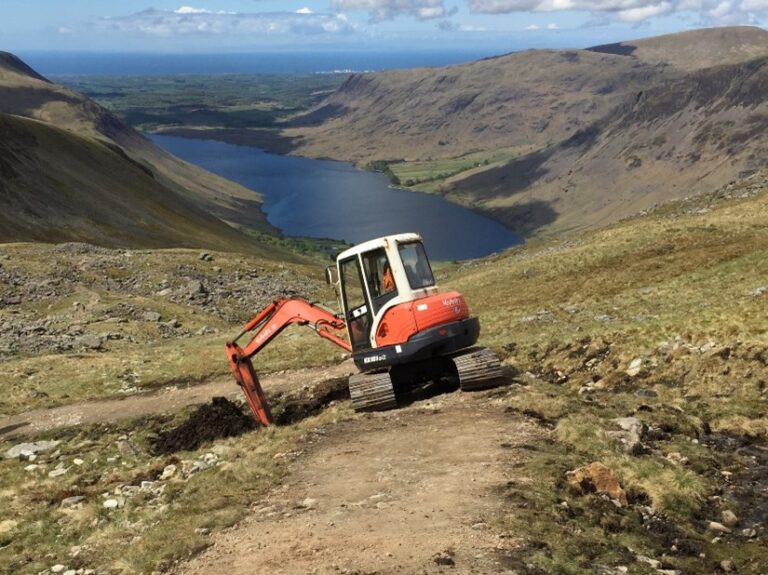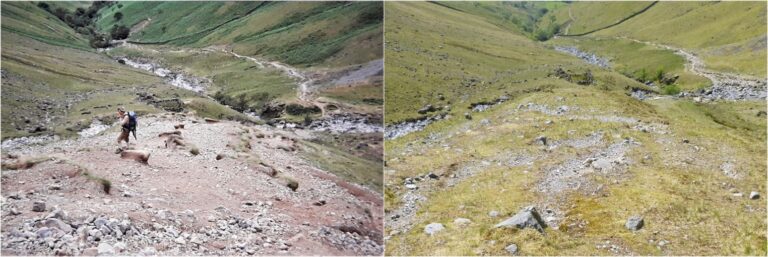Brown Tongue, Scafell Pike
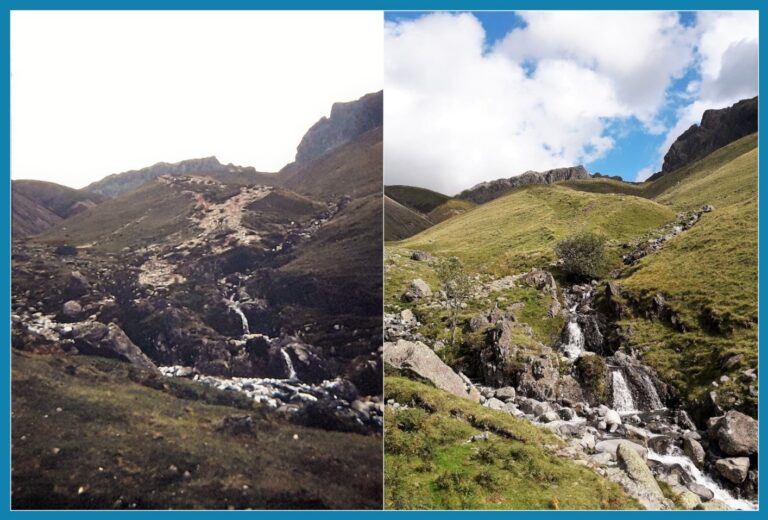
Location
Runs north east from the top of Wastwater
Legal status
Public Right of Way footpath
Path use
This path forms part of the shortest route up Scafell Pike, making it the most popular choice for people doing the Three Peaks Challenge.
Historic interest
Originally a route used by climbers to reach Scafell crag rather than the summit.
The problem
Scafell Pike receives a vast number of users every year, all year, at all times of the day and night. Group sizes can be very big, as such a high proportion of users are charity groups. As a result, paths are rapidly damaged and widened, particularly as many of the users will be inexperienced and trying to find soft vegetation to use. Maintenance and minor project work is endless to try to hold surfaces together, reduce the spread of random cairns and to limit erosion where possible. The thin soil and vegetation on Brown Tongue just could not cope with the traffic, as can be seen in the above photo from 1989.
